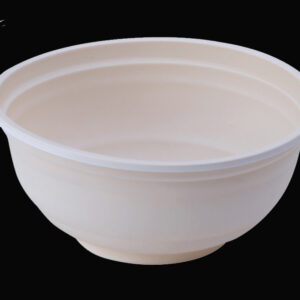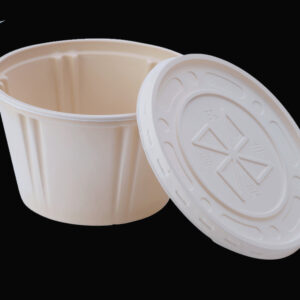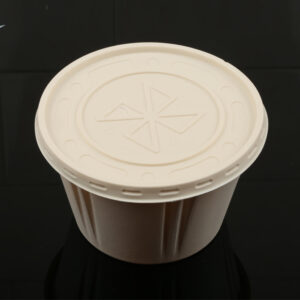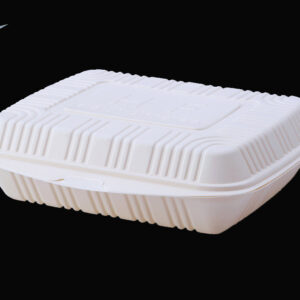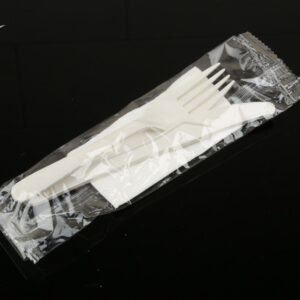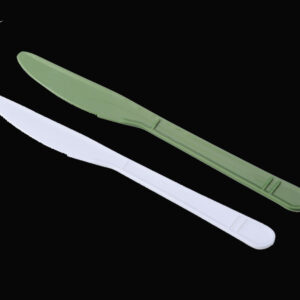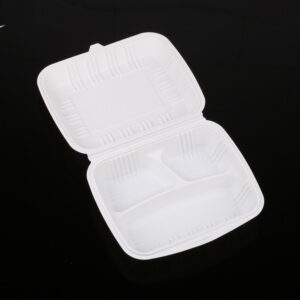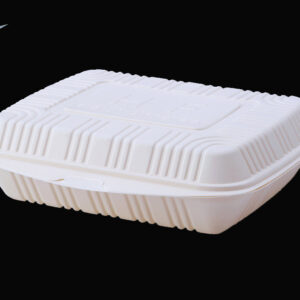In today’s fast-paced world, takeout and delivery services have become integral to our daily lives. However, the convenience of these services often comes at a cost to the environment, particularly regarding the packaging used for food delivery. This article explores the importance of eco-friendly takeout containers, their benefits, types, challenges, and tips for implementation.
The Environmental Impact of Takeout Containers
Traditional takeout containers, often made of Styrofoam or non-biodegradable plastics, contribute significantly to pollution and environmental degradation. These materials take hundreds of years to decompose, filling landfills and harming wildlife. Moreover, the production of plastic containers contributes to greenhouse gas emissions and relies heavily on finite fossil fuels.
Importance of Eco-Friendly Takeout Containers
Reducing Plastic Pollution
Eco-friendly takeout containers offer a sustainable alternative to traditional plastic packaging, helping to reduce the environmental burden of plastic pollution. By opting for biodegradable or compostable materials, we can minimize the accumulation of non-recyclable waste in our landfills and oceans.
Sustainable Sourcing
Many eco-friendly takeout containers are made from renewable resources such as recycled paper, cardboard, bamboo, or plant-based plastics. Businesses can support sustainable sourcing practices and reduce their carbon footprint by choosing these materials.
Biodegradability and Compostability
Unlike traditional plastics, eco-friendly takeout containers are designed to biodegrade or compost under the right conditions. This means that at the end of their lifecycle, they can break down into natural elements without causing harm to the environment.
Environmental Friendliness of Materials
Regarding the environmental friendliness of materials used in takeaway containers, it’s essential to delve deeper into their biodegradability and sustainability. Let’s look closely at some commonly used materials and their eco-friendly characteristics.
1. Corn starch
Corn starch, a popular choice for eco-conscious packaging, offers impressive biodegradability. Under optimal composting conditions, which include adequate moisture, oxygen, and temperature levels, corn starch-based materials can break down within 6 to 12 months. This means they naturally decompose into harmless components, leaving no lasting environmental impact behind.
2. sugarcane bagasse
Similarly, sugarcane bagasse, a byproduct of sugarcane processing, exhibits rapid biodegradation. Within just 3 to 6 months, sugarcane bagasse-based containers can completely decompose in an ideal composting environment. This swift breakdown minimizes waste accumulation in landfills and reduces overall environmental harm.
3. Bamboo
Bamboo, known for its sustainability and versatility, is another eco-friendly material gaining traction in the packaging industry. Bamboo-based containers typically biodegrade within 6 to 12 months, offering a renewable alternative to conventional plastics. Since bamboo is a fast-growing plant that regenerates quickly, its use in packaging supports sustainable forestry practices and helps mitigate deforestation.
4. renewable resources
Compostable plastics from renewable resources, such as polylactic acid (PLA), also make waves in eco-friendly packaging. When exposed to composting conditions, PLA, derived from plant starch like corn or sugarcane, undergoes biodegradation within 3 to 6 months. As it breaks down, PLA releases carbon dioxide and water, leaving behind no harmful residues.
It’s important to consider that the biodegradation process may vary depending on environmental conditions. Degradation rates may differ in home composting setups, where conditions may not be as controlled as in commercial facilities. Nonetheless, adopting these biodegradable materials reflects a commitment to sustainability and a proactive approach to reducing plastic pollution.
Benefits of Using Eco-Friendly Takeout Containers
Environmental Benefits
Switching to eco-friendly takeout containers can significantly reduce the carbon footprint of food packaging, helping to mitigate climate change and preserve natural resources. By investing in sustainable alternatives, businesses can demonstrate their commitment to environmental stewardship and inspire others to follow suit.
Health Benefits
Traditional plastic containers may contain harmful chemicals such as BPA and phthalates, which can leach into food and pose risks to human health. Eco-friendly takeout containers are free from these toxins, providing a safer and healthier option for consumers and food service workers.
Brand Image and Consumer Perception
In an increasingly eco-conscious market, consumers view businesses that prioritize sustainability more favorably. By using eco-friendly takeout containers, restaurants can enhance their brand image, attract environmentally conscious customers, and differentiate themselves from competitors.
Challenges and Considerations
Cost
One of the main challenges of adopting eco-friendly takeout containers is the perceived higher cost than traditional plastics. However, as demand for sustainable packaging grows and economies of scale are realized, the cost differential is expected to decrease over time.
Availability
While eco-friendly takeout containers are becoming more widely available, some businesses may need help finding suppliers that offer suitable options in their area. Companies need to research and partner with reputable suppliers who prioritize sustainability.
Consumer Education
Many consumers still need to learn about the environmental impact of traditional takeout containers and the benefits of switching to eco-friendly alternatives. Businesses play a crucial role in educating their customers about the importance of sustainable packaging and encouraging behavior change.
Tips for Restaurants and Consumers
Choosing the Right Supplier
When selecting a supplier for eco-friendly takeout containers, it’s crucial to consider various factors to ensure you choose the right partner for your business needs. One such supplier worth considering is Dongguan Hengfeng High-Tech Development Co., Ltd. This company specializes in designing and producing degradable materials and disposable products, making them a leading player in environmental protection.
Dongguan Hengfeng High-Tech Development Co., Ltd. is recognized as one of the pioneers in China’s environmental protection industry. They are a core member of the Environmental Protection Association of Guangdong Province, demonstrating their commitment to sustainable practices and environmental stewardship. Additionally, the company achieved ISO9001 certification in 2011, underscoring its dedication to maintaining high-quality standards in its products and operations.
Case Studies of Successful Implementation
1. Sweetgreen
Industry: Fast Casual Restaurant
Overview: Sweetgreen, a popular fast-casual restaurant chain known for its salads and healthy offerings, committed significantly to sustainability by transitioning to eco-friendly takeout containers.
Implementation: Sweetgreen replaced traditional plastic containers with compostable bowls made from plant-based materials such as corn and sugarcane. Additionally, they introduced compostable utensils and paper-based packaging for their salads and wraps.
Outcomes: The transition to eco-friendly packaging aligned with Sweetgreen’s brand values of health and sustainability and resonated well with their environmentally conscious customer base. The move garnered positive attention from media outlets and customers, enhancing Sweetgreen’s reputation as a socially responsible company. Moreover, switching to compostable containers helped reduce the chain’s environmental footprint and contributed to its sustainability goals.
2. Shake Shack
Industry: Fast Food Restaurant
Overview: Shake Shack, a popular fast-food chain known for its burgers and shakes, undertook initiatives to reduce plastic waste by implementing eco-friendly takeout containers.
Implementation: Shake Shack introduced compostable packaging for burgers, fries, and other menu items. They replaced traditional plastic containers with renewable resources such as corn starch-based plastics. Additionally, they encouraged customers to opt for digital receipts to minimize paper waste.
Outcomes: Shake Shack’s efforts to adopt eco-friendly packaging received widespread praise from customers and environmental advocates. By switching to compostable containers, the chain demonstrated its commitment to sustainability and inspired other fast-food restaurants to follow suit. Moreover, the move helped Shake Shack enhance its brand image and attract environmentally conscious consumers who prioritize eco-friendly practices.
These case studies highlight how restaurants and businesses in the food industry can successfully transition to eco-friendly takeout containers, reducing their environmental impact and enhancing their brand reputation and customer loyalty.
Conclusion
Eco-friendly takeout containers offer a sustainable solution to the environmental challenges posed by traditional packaging materials. Businesses can reduce their carbon footprint, protect natural resources, and enhance their brand image by choosing biodegradable, compostable, or recycled alternatives. While challenges such as cost and availability exist, the long-term benefits of adopting eco-friendly practices far outweigh the initial investment. Together, we can work towards a greener, more sustainable future for the food service industry.
FAQs
1. Are eco-friendly takeout containers more expensive than traditional plastics?
While eco-friendly options may have a higher upfront cost, the long-term environmental and health benefits outweigh the initial investment.
2. Can eco-friendly takeout containers withstand hot food items?
Many eco-friendly materials, such as bamboo and compostable plastics, are suitable for hot food items and offer comparable performance to traditional plastics.
3. Are all eco-friendly takeout containers recyclable?
Not all eco-friendly materials are recyclable in every area. It’s essential to check local recycling guidelines and dispose of containers accordingly.
4. Do eco-friendly takeout containers degrade in landfills?
Eco-friendly containers are designed to biodegrade or compost under the right conditions, but landfill environments may need to support this process more effectively. Proper disposal and composting are recommended for maximum environmental benefit.
5. Can consumers request eco-friendly packaging when ordering takeout?
Yes, many restaurants offer eco-friendly packaging options upon request. Customers can inquire about sustainable packaging choices to support environmentally friendly practices when placing orders.


